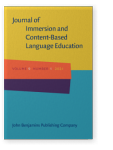Vol. 9:1 (2021) ► pp.85–111
Vol. 9:1 (2021) ► pp.85–111
Sketching a motivational landscape
Motivational variation within bilingual secondary education in the Netherlands
Studies of motivation in bilingual education settings often address questions of differences between learners in bilingual programmes and those in mainstream education. Problematic in this respect is our increasing awareness of the inherent differences between these two learner groups, as learners in bilingual programmes have often chosen or been selected for a bilingual route (Mearns et al., 2017). The study presented here therefore does not seek to compare learners in bilingual and non-bilingual programmes, but rather to explore the nature of language learning motivation within the context of bilingual secondary education (BSE) in the Netherlands. Using a purpose-designed tool reflecting the L2 Motivational Self System (Dörnyei, 2009), this study investigated trends in motivation across genders, academic tracks and year-groups of nearly 2000 learners. Findings suggest that, although these learners all have bilingual education in common, differences between the motivations of these groups should not be overlooked.
Article outline
- Introduction
- 1.The context for research: Dutch bilingual secondary education
- 2.Learner variables, (L2) motivation and CLIL
- 3.A Framework of L2 Motivation: The L2 Motivational Self System
- 4.Aims and focus of the current study
- 5.Method
- 5.1Data collection
- 5.2Recruitment and participants
- 5.3Survey design
- 5.3.1Manual adaptation for Dutch BSE
- 5.3.2Principal component analysis and resulting alterations
- 5.3.3Additional data
- 5.4Data analysis
- 6.Results
- 6.1Additional comments
- 6.2Quantitative analyses
- 6.2.1Gender
- 6.2.2Educational track
- 6.2.3Year-group
- 7.Discussion
- 7.1Gender difference, not gender gap
- 7.2Differentiation beyond organisation
- 7.3Shifting priorities?
- 8.Limitations of this study
- 9.Conclusions and implications for practice and research
- Notes
-
References
